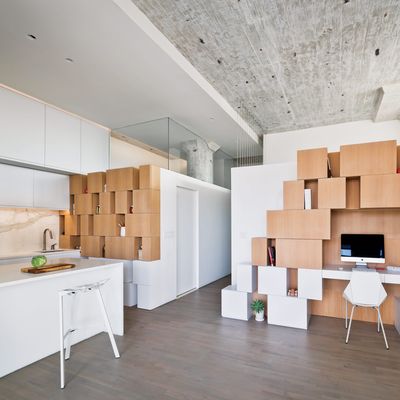
“I couldn’t believe that underneath all that drywall were these fantastic concrete columns and 12-foot ceilings,” says Alex Delaunay, principal architect at SABO project, who oversaw the gut renovation of a circa-1913 factory floor turned two-person home in Carroll Gardens. Initially, Delaunay was commissioned to refurbish the bathroom alone, but he saw an opportunity to create a modern living space out of a century-old shell. “It became apparent very quickly that there was so much beneath the surface,” he explains. “Luckily, the owners were game for a total overhaul.”
When the building was turned into residential property in the ’80s, the exposed wood and beams were covered up and the ceilings dropped four feet to cut heating costs. “My strategy was to reveal the historic character of the building and bring natural light to every nook,” Delaunay says of the job. It took six months to finish.
The partitions that carved the loft up into somewhat mingy rooms came out, creating one 1,333-square-foot open space. The interior walls that remained (or were added) were all kept to a height of about eight feet; above that, they became glass. That meant that light in the formerly gloomy kitchen and bathroom could spread through the whole apartment. Sleek white kitchen cabinets were scaled to the windows, creating visual continuity, and turquoise tiles and a seven-foot tub (“the biggest we could find”) gave character to the bathroom. “A contemporary background helped bring the hundred-year-old rough elements front and center,” says Delaunay.
Since it’s not a huge apartment, much of the décor is dual-purpose. In the bathroom, a wide basin is equipped with two sinks and extra-large cabinets. (“There’s not a ton of storage in the bedroom, so the couple was really happy about this,” Delaunay says.) And the apartment’s most visible feature, the artsy wooden-box installation that extends from the kitchen to the mezzanine, doubles as shelving and storage. Every cubby is sized precisely to its contents.
Designer: SABO project
Built: 1913
Before: Off-the-rack white-walled 1980s loft.
After: Open clerestories, great storage, and a bathroom to envy.
*This article appears in the Winter 2016 issue of New York Design Hunting.
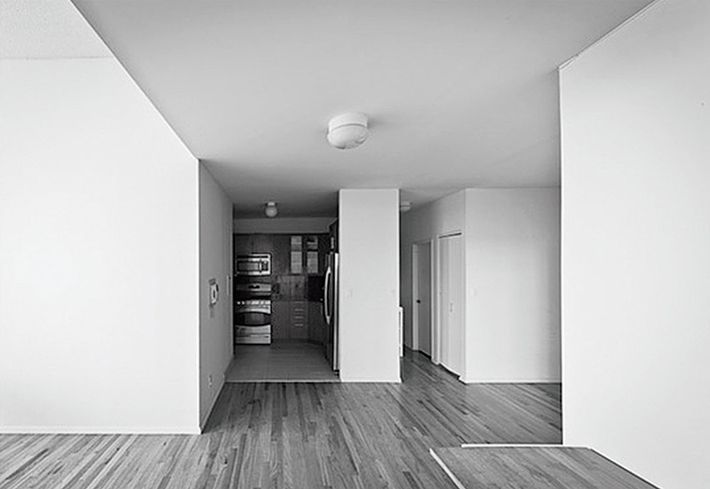
Before: The dropped ceiling got un-dropped and the Sheetrock walls came out …
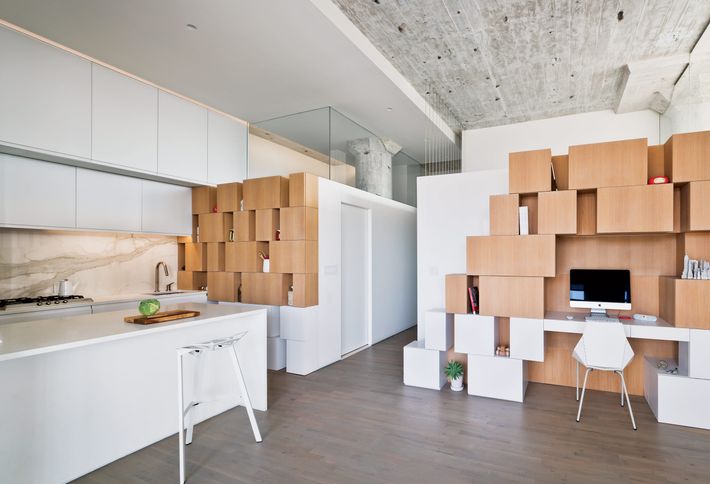
… revealing the industrial past within. The Italian-marble backsplash is from the quarries of Calacatta. The white-oak boxes are set in horizontal bands to elongate the room.
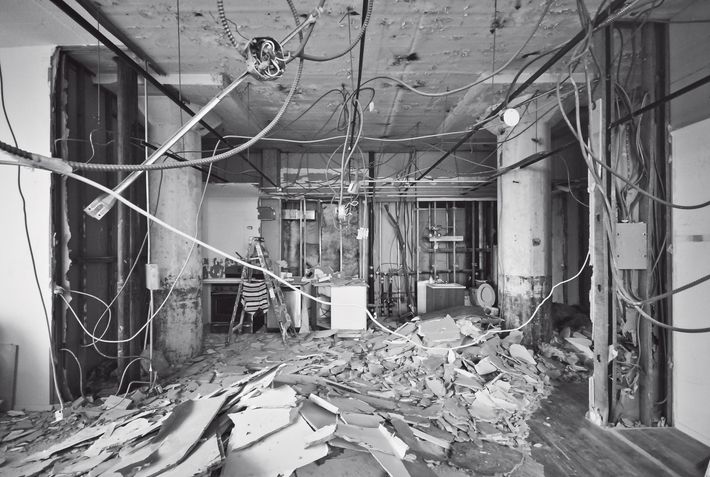
During the renovation.
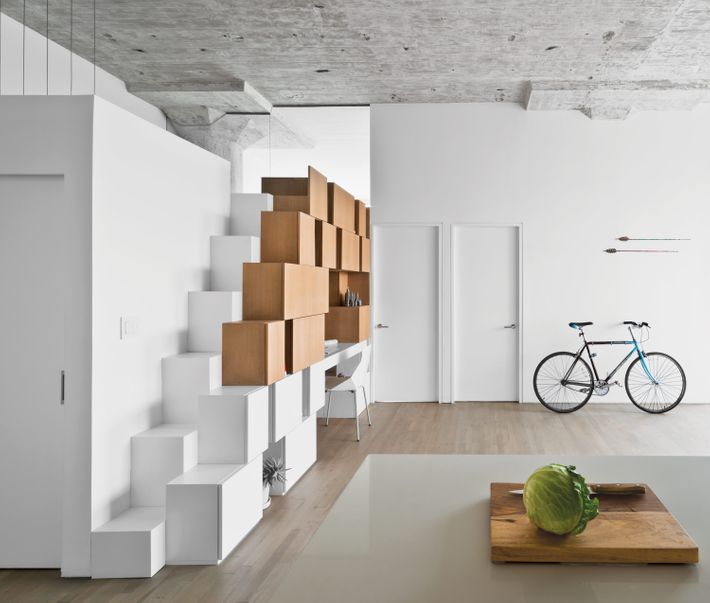
The walk-in closet had its walls capped at six feet six inches high. The boxlike cabinets variously open up- or downward, on horizontal hinges.
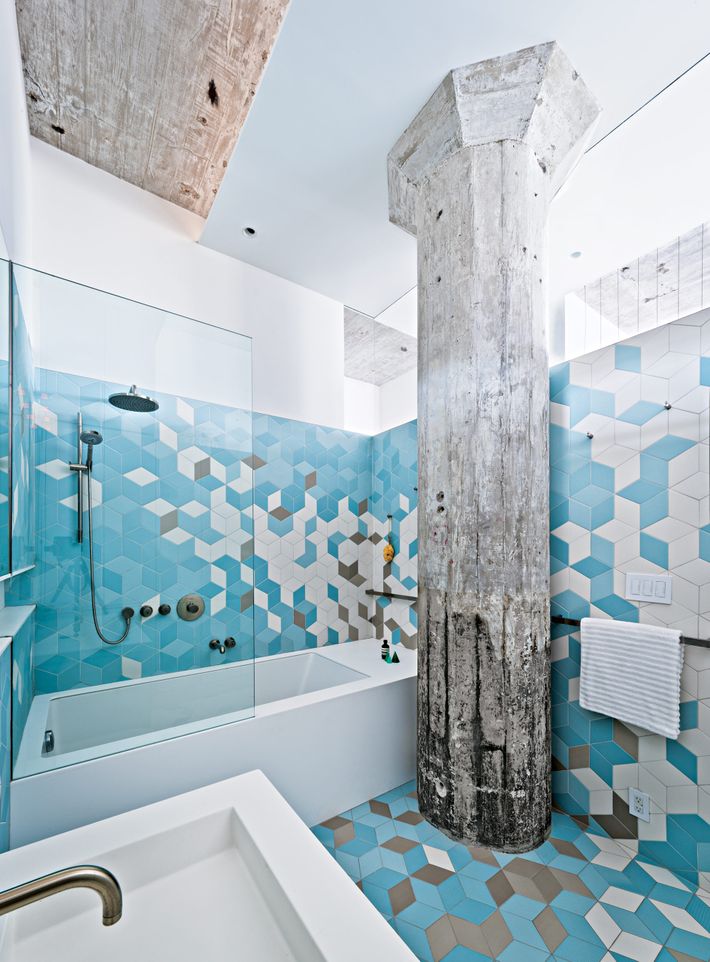
Since there’s only one bathroom, the tub takes both owners’ preferences into account, with a hand shower and rainfall showerhead. That’s not wood: The ceilings are concrete, displaying the grain of the forms they were poured into a century ago. The seven-foot bathtub rests on a Corian deck and noses up to one of the building’s concrete columns. The tiles are from Stone Source, arranged to mimic windblown leaves.

